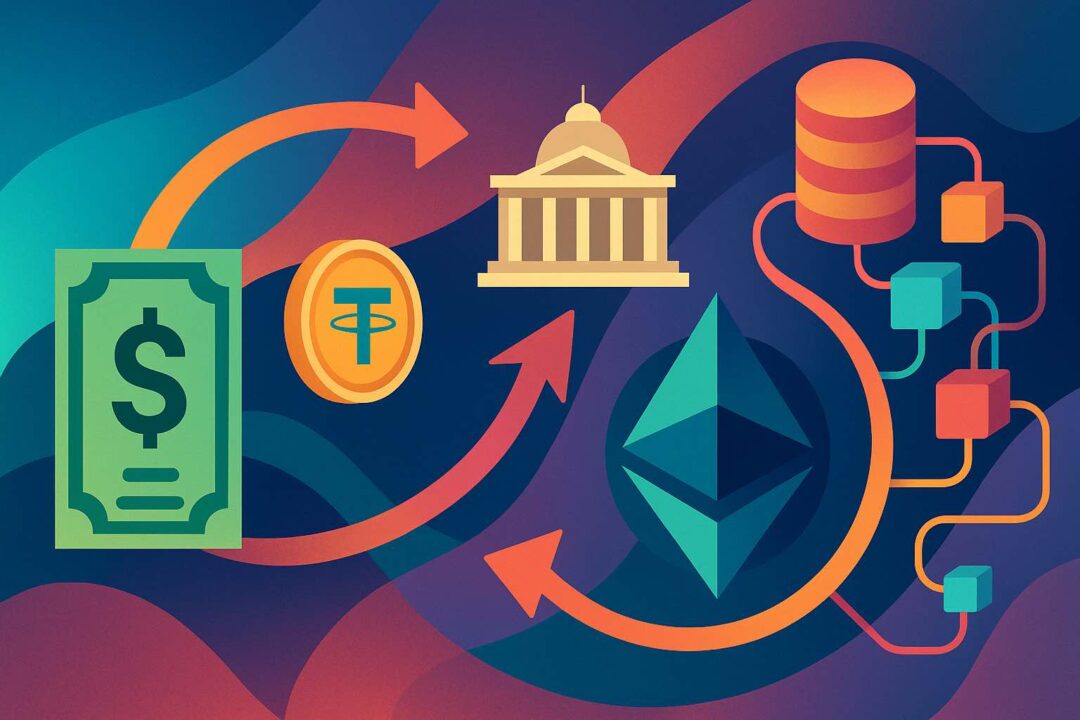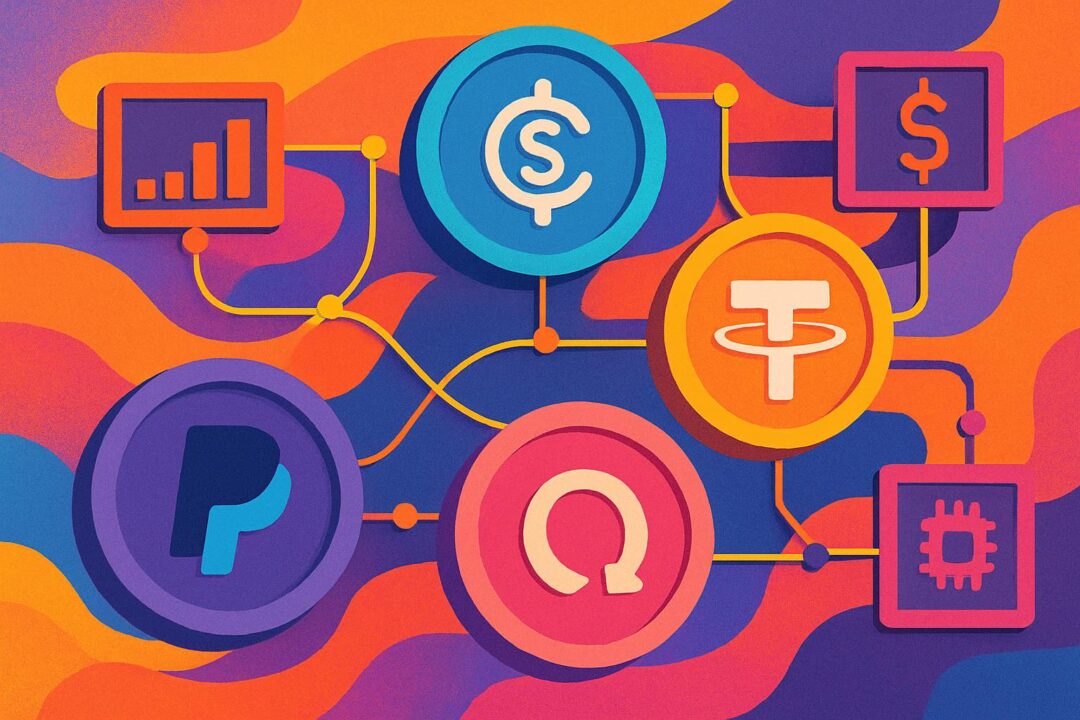For years, it seemed like the U.S. financial system was afraid of Bitcoin and blockchain. The crypto space was framed as a threat to the dollar, to monetary control, and even to government authority itself.
But now? That fear is gone.
What changed? Quite simply, governments and institutions realized something crucial:
Most digital assets — including stablecoins, tokenized real-world assets (RWAs), and even Bitcoin in certain forms — are easily controllable.
They can be frozen, sanctioned, restricted, or confiscated. And perhaps most importantly, they don’t require decentralized blockchains at all to function.
Stablecoins, for example, can operate on public blockchains, but they don’t have to. The same applies to tokenized Bitcoin — which refers to Bitcoin that is held by a custodian and issued as a separate token (like Wrapped Bitcoin, or WBTC – or any form of accepted digital representation of Bitcoin) on another blockchain, such as Ethereum (or any other blockchain – OR NOT ON ANY TYPE OF BLOCKCHAIN AT ALL). These versions of Bitcoin can be traded more easily within DeFi ecosystems, but they are fully centralized and can be frozen or restricted by the issuer at any time.
So once regulators and governments saw that blockchain-based assets could be just as controllable as traditional digital assets, the fear faded. In fact, these tools are now being embraced — not as threats, but as extensions of the existing system.
Bitcoin still exists in its original, decentralized form. But as this post will explore, its practicality, scalability, and resistance to co-option are far more limited than many assume — especially if it ever achieves wider adoption.
Stablecoins: Blockchains Without the Risk
Stablecoins like USDC and USDT have become the backbone of much of the crypto economy. But they also represent a new form of digital dollar — one that governments and regulators can accept, and even benefit from.
Why?
Because, despite living on public blockchains, these assets are fully controllable:
- Issuers can freeze funds at specific addresses.
- Compliance with sanctions and blacklists is built into the system.
- Central authorities retain full control over issuance, redemption, and user access.
And here’s the crucial insight: None of this requires a decentralized blockchain. Even if these tokens live on Ethereum, Solana, or other decentralized networks, the control is enforced at the token layer — by the issuer, not the chain.
As a result, governments no longer need to push back against blockchain infrastructure. They can use it — on their terms.
Tokenized RWAs: Digitization Without Decentralization
The same applies to tokenized real-world assets (RWAs) — gold, real estate, treasuries, and more.
- The token may live on-chain, but the legal and custodial control remains off-chain.
- Access can be permissioned.
- Transfers can be blocked or reversed.
- Assets can be frozen, taxed, or seized in compliance with local laws.
In short, tokenization doesn’t mean decentralization. It means digitization — and that’s something the existing system is comfortable with.
Bitcoin’s Core Challenges
Bitcoin, by contrast, is harder to co-opt — but also harder to use.
Many people still believe Bitcoin poses a unique threat to government-controlled money. And in some ways, that’s still true. But in practice, Bitcoin faces several structural problems that limit its viability as a global alternative:
Scalability Limits
Bitcoin’s base layer processes fewer than 10 transactions per second. That’s simply not enough to support broad, everyday usage — especially at global scale.
If everyone on Earth tried to use Bitcoin directly, most people would only be able to transact once or twice per year. That’s a hard ceiling.
Cost and Complexity
On-chain Bitcoin transactions are often expensive, and managing a self-custodied wallet securely requires technical knowledge and diligence.
This makes self-custody — a central pillar of Bitcoin’s value proposition — unrealistic for most people. In practice, the majority rely on custodial wallets, exchanges, and fintech platforms. And once that happens, Bitcoin becomes subject to the same controls as any other asset.
Tokenized Bitcoin: The Quiet Trend
It’s already happening.
Tokenized versions of Bitcoin (like WBTC on Ethereum) now make up a meaningful portion of the market. These are custodial, centralized, and controllable.
Similarly, Bitcoin ETFs — now approved in the U.S. — are bringing BTC into fully regulated, fully surveilled financial markets. In these environments, freezing, seizing, and restricting access to Bitcoin becomes possible.
If Bitcoin’s most widely used form ends up being tokenized or custodial, then its defining characteristics — censorship-resistance, seizure-resistance, and neutrality — are effectively lost.
The Convenience Tradeoff
Most users prioritize convenience over ideology. They want speed, simplicity, and integration with their existing financial lives.
In that sense, stablecoins offer something more aligned with mainstream expectations:
- Dollar exposure without a bank account.
- Fast, inexpensive payments.
- Regulatory compliance (which many users see as a feature, not a bug).
Bitcoin, for all its principles, is harder to use and integrate. Unless it undergoes major technological shifts — or the world’s political landscape changes dramatically — it may remain niche and peripheral for most people.
A Future Where Bitcoin Is Tamed
So what happens if Bitcoin gains broader adoption — but only in forms that are convenient, custodial, and tokenized?
- Its core differentiator is lost.
- Its scarcity becomes abstract — valuable only if users can actually use it.
- Its role as an independent monetary system weakens.
In such a future, Bitcoin doesn’t fail outright — but it becomes something more like digital gold ETFs: owned by institutions, regulated by governments, and stripped of its original rebellion.
Bonus Section: The Centralized Endgame
While much attention has been given to the decentralization promised by blockchain technology, the long-term trajectory may look very different — and much more centralized.
Imagine a future where:
- Stablecoins, tokenized Bitcoin, tokenized stocks, government bonds, real estate, and commodities are all digitized.
- All assets are interoperable, instant to trade, and held in user-friendly digital wallets.
- Taxes are calculated automatically. KYC is built-in. Cross-border payments are trivial.
What powers this world?
Not a blockchain in the traditional, decentralized sense — but likely a government-designed or sanctioned centralized network of databases or permissioned ledgers.
These platforms could use blockchain-like architectures — but without the decentralization. And they wouldn’t need to.
Stablecoins and tokenized assets don’t require blockchains at all.
They just need digital infrastructure, and a trusted issuer or controller. That could be:
- A central bank.
- A regulated private consortium.
- Or existing players like Visa, JPMorgan, or Nasdaq.
Why Governments Will Love This
- Full control over monetary flows and financial surveillance.
- Programmable money to enforce taxes, welfare eligibility, or spending restrictions.
- The ability to freeze, seize, or block assets instantly.
- Tools to combat fraud, evasion, and illicit finance — all built-in by design.
In a time of crisis — financial collapse, systemic risk, or widespread disillusionment with existing systems — this kind of centralized, hyper-efficient alternative could be presented as the logical solution.
And even without a crisis, it may come in gradually, step by step, through added convenience and user benefits:
- Faster tax refunds.
- Universal wallets for benefits and digital ID.
- Instant salary payments.
- “Free” stock trading and stablecoin savings accounts.
Drip by drip, the system improves — and people choose it, willingly, because it’s easier.
Why Users Will Accept It
- People value convenience over ideology.
- They don’t want to manage private keys or worry about irreversible transactions.
- They want security, support, and simplicity — even if that means less sovereignty.
And if governments or corporations can offer this, wrapped in the language of innovation and efficiency, it won’t even feel like a compromise. It will feel like progress.
The Role of Centralized Institutions
Even in today’s crypto world, most users already rely on:
- Centralized exchanges.
- Custodial wallets.
- Traditional banks to on- and off-ramp fiat.
A fully centralized digital asset ecosystem wouldn’t be a revolution — it would be a continuation of the direction we’re already heading.
Conclusion: A Revolution Absorbed
What began as a radical experiment in monetary independence may end up as a blueprint for a more efficient, more controlled digital financial system.
Blockchains showed what’s possible. But control, convenience, and compliance are what’s winning.
It’s not that the old system is being replaced. It’s being upgraded — using the parts of blockchain that are useful, and discarding the parts that threaten authority.
And in the end, the system may not just survive. It may emerge stronger than ever — wrapped in the language of innovation, but built on the foundation of total control.
Discover more from Brin Wilson...
Subscribe to get the latest posts sent to your email.



